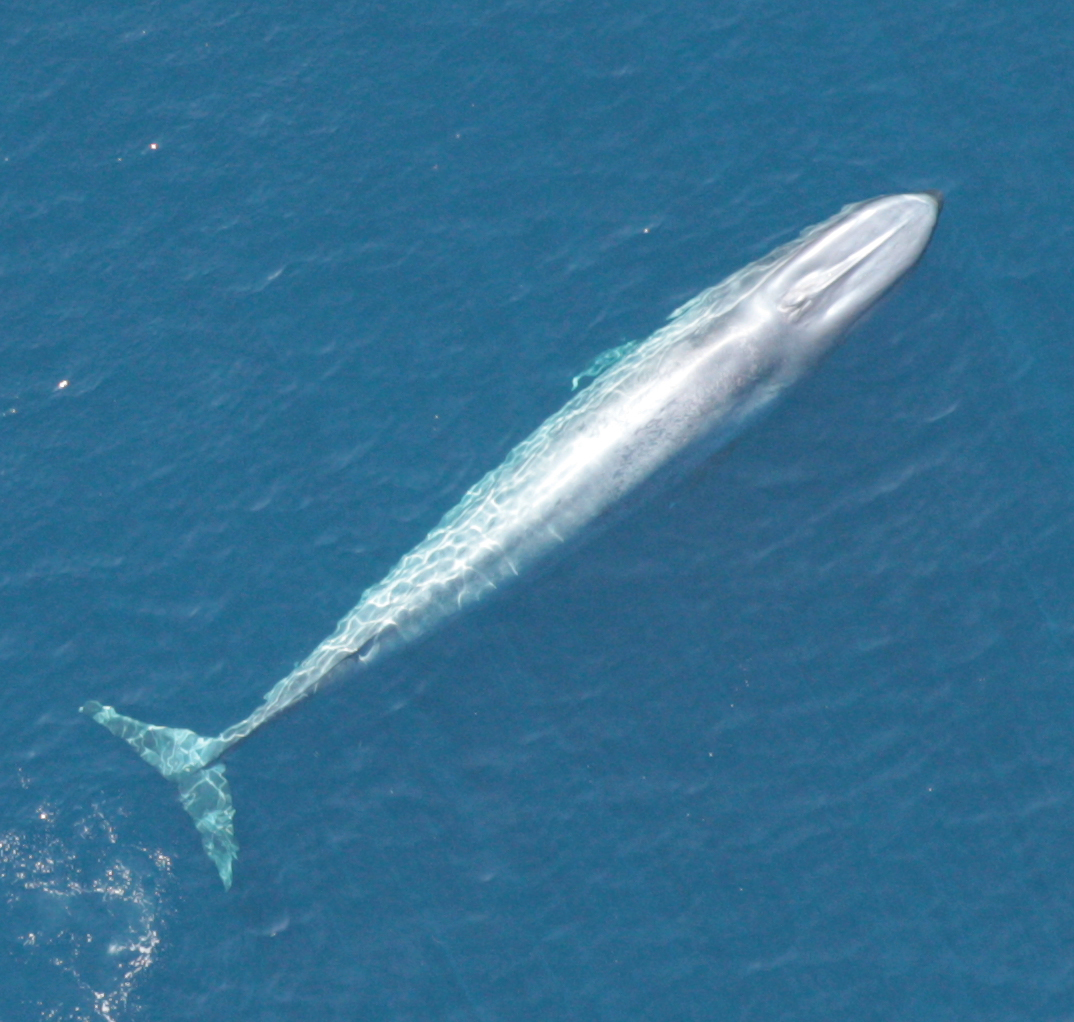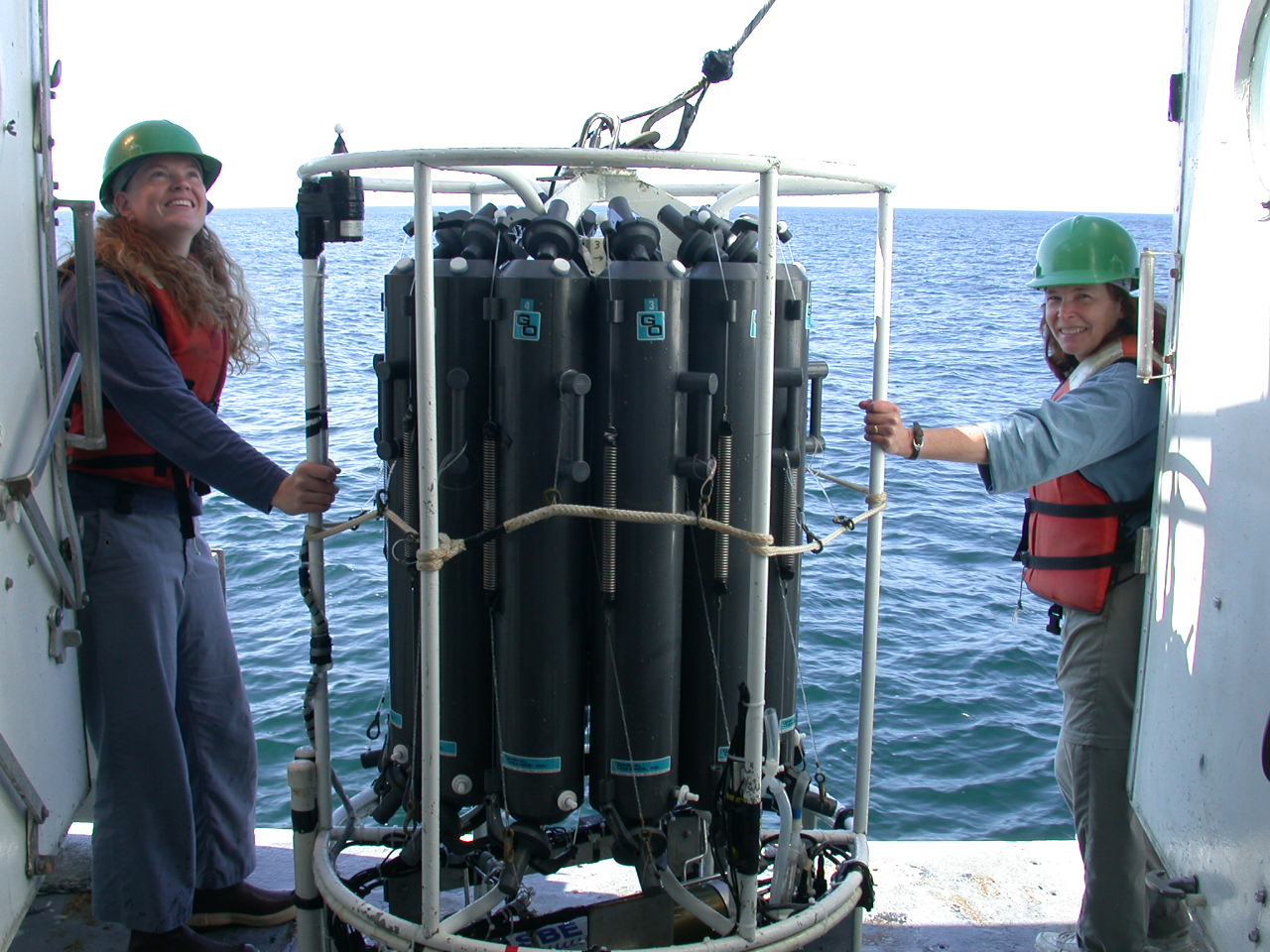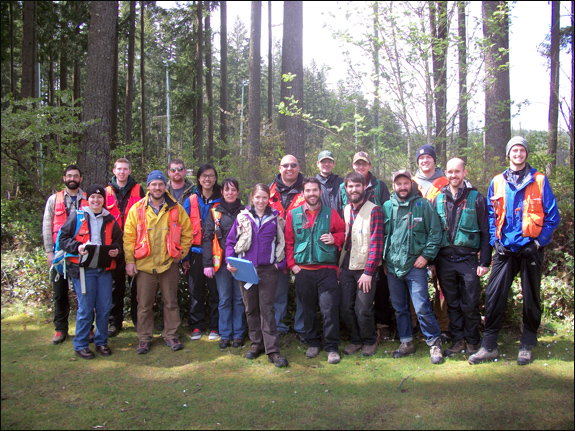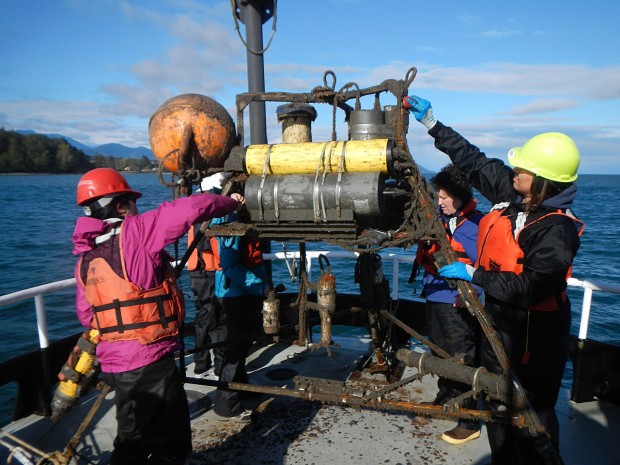Populations of the iconic California blue whale have rebounded to near historic levels, a remarkable achievement considering the whales were hunted almost to extinction in the past. The study was lead by graduate student Cole Monnahan and coauthored by aquatic and fisheries sciences professors Trevor Branch and André Punt, and showcases a success story when it comes to conservation management.
Read more at UW Today »Predicting when toxic algae will reach Washington and Oregon coasts
Late summer is the peak time for harmful algae that can turn lakes into toxic scum, cancelling fishing trips and fouling water supplies. While the Pacific Northwest doesn’t get anything near the activity that turned parts of Lake Erie into bright green slime, our coasts are vulnerable in late summer to this largely unpredictable – and in our case unseen – menace.
Read more at UW Today »Students craft forest stewardship plan in partnership with King County
The College of the Environment is full of opportunities for students to try their hand at solving real world problems that come with managing natural resources. This past spring, School of Environmental and Forest Sciences students partnered with King County to develop a forest stewardship plan for the newly acquired Black Diamond Natural Area. Taking into account the property’s multiple uses, students addressed the social, economic, and environmental issues that will serve the county’s needs for the long term.
Read more on the SEFS Blog »A unique lab class: UW students explore nation’s largest dam removal
The Friday Harbor Laboratories, located on the remote shores of the San Juan Islands, provide a unique setting for students to live and breathe marine research. This spring, a group of students from several different colleges and universities participated in one of the labs’ apprenticeships looking at the effects of the Elwha Dam removal on the Strait of Juan de Fuca’s marine environment.
Read more at UW Today »Using eDNA to help scientists monitor marine ecosystems
Marine plants and animals leave behind tiny markers of their presence, often in the form of skin cells that have been shed, damaged tissues, or waste products – and within that lies their signature DNA. From a sample of seawater, scientists can read that eDNA — that is, environmental DNA — and paint a picture of species diversity in specific ocean ecosystems, determine whether or not invasive species have landed in local waters, and even sharpen their ability to monitor ecosystem changes as is often required by law.
Read more at the Stanford Woods Institute »





